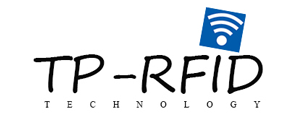우리는 세상을 더 좋고 편리한 곳으로 만들기 위해 우리의 작은 역할을 멈추지 않을 것입니다. & 우리는 세상을 더 좋고 편리한 곳으로 만들기 위해 우리의 작은 역할을 멈추지 않을 것입니다.?
소매업에서 RFID 기술의 사용이 빠르게 증가하고 있습니다.. RFID 인레이 선택은 RFID 소매 프로젝트 계획의 첫 번째 단계 중 하나이며 사용 가능한 UHF 인레이 옵션이 많기 때문에 가장 시간이 많이 걸리는 작업 중 하나입니다..
다행스럽게도, 지난 몇 년 동안, RFID 표준은 기술의 발전과 함께 발전해 왔습니다., RFID UHF 인레이의 선택을 더 쉽게 만듭니다.. 최근에 작업한 RFID 프로젝트를 기반으로, here are some tips to make your process easier.
그래서, how do you choose an accurate RFID UHF inlay? Please note the following tips:
1, Choosing general inlay specifications will be more flexible choices
Through ten years of practical application, RFID tags have been concentrated in three styles , especially in retail products, which basically cover 90% of the global RFID applications.
70×15, 72x17mm: Excellent front reading distance, suitable for batches, high reading requirements, can be suitable for most medium-sized labels of products up to 20 몇 미터 떨어진 곳에.
50x30mm: Good reading distance at all angles, it is more suitable for clothing tags and tray or shelf labels, 데이터 저장고 15 미터.
40×15, 41x16mm, Reach the ideal reading distance in the smallest range, the longest distance can reach to 6 미터
Here is other antenna for option:
Large label around 95x20mm, which is suitable for long-distance reading, suitable for 4’x1′, 4’x2′, 4’x4′ industrial RFID labels.
Omnidirectional tags around 50x50mm, which is suitable for high tags with omnidirectional requirements, the chip is generally MONZA 4QT.
Mini label is as small as 3x6mm, the near field reading distance is about 10cm, we have intensive reading PAD package.
You can also develop or customize antenna according to requirements, we will need your clear following parameters.
컴퓨터의 장치 관리자를 엽니다., Target performance; Target reading distance, angle, group reading performance, working environment, temperature and humidity of the application card reader
비, The objects and materials to be posted (inlay design needs to simulate the environment design),
R16-10DB, Target operating frequency, ETSI, FCC, NCC, CCC
디, Chip storage and data requirements (choose the chip as the antenna design target)
사용자의 요구에 맞게 사용자 정의할 수 있습니다., Requirements for label materials (환경 보호, wear resistance, Anti-Metal-NFC-Flexible-Mini-Label-Tag-5x5mm, 방수, 점착제, post printing, cutting, roll packaging requirements).
There are many ways to use RFID UHF apparel tags in retail, but one of the most common is to put RFID inlay inside the tag or tag of a garment. The best RFID inlay should be small enough to be mounted discreetly on these RFID hang tags, while at the same time strong enough to achieve a long read range for maximum inventory accuracy. Because it is ideal for retailers to reduce the number of different sizes of inserts that must be used in deployment, it is best to use RFID paper label tags that can be properly implemented in any standard size tag.
일반적으로, RFID apparel tag labels involve different sizes and fabrics, such as jeans, sweaters, shirts, and other clothing fabrics. The following are the three most popular antenna sizes in the clothing industry:
옵션 1: 1772+R6P RFID antenna inlay is suitable for RFID hang tags or RFID paper label. When it is close to denim, sweater, underwear, coat, shirt and other different fabrics, it has little impact and has the best performance.
TP-RFID 30*50mm MR6 MR6-P UHF RFID Inlay Label Tags for Clothing Retail, Logistics Supply Chain, Automotive Management
옵션 2: 5030+R6 RFID antenna inlay is suitable for making RFID care label and hang tag. This antenna design is omnidirectional and good for group reading, and the tag reading distance is slightly closer than 1772+R6P. It is only 50×30 mm, which can accommodate the vast majority of tags used in the world.
옵션 3: 1641+R6P RFID antenna inlay performance is slightly worse than the above two antenna, but the size is greatly small. 일반적으로, there are more popular for woven labels, and inlay can be selected for both horizontal and vertical direction. 일반적으로, the reading distance can be more than 4 미터, which is no problem for inventory and passage.
2. Varable data processing printing and encoding process
Integrated chip makers such as Impinj, NXP and Alien Technologies have improved chip performance in terms of read-write sensitivity, thereby increasing productivity. Chip selection, optimized antenna design and system-level testing will ensure the correct label design for different applications. Automate processes in a wide variety of applications, such as retail and consumer goods.
For small batch applications, RFID zebras or Salto printers and handheld devices are used for tag coding, or RFID printers are used for one-step printing and coding of tags. In these cases, particular care should be taken not to use duplicate EPC in the field.
물론, no retailer has to make that choice alone. TP-RFID’s expert team is very happy to talk with you and help you select the appropriate RFID inlay for your situation.
If you have any need for technical support, please contact TP-RFID’s sales team: info@tp-rfid.com

